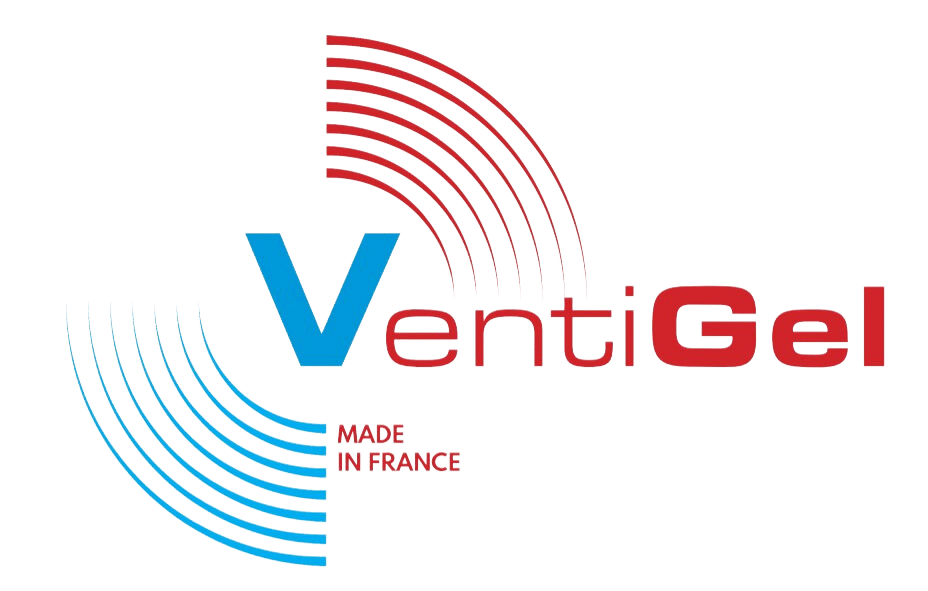Watering vines is a crucial facet of viticulture, especially in the face of today’s climatic challenges. In France, a country renowned for its quality wines, water management of vineyards has taken on vital importance. With periods of drought becoming increasingly frequent and intense, winegrowers are being forced to rethink their traditional methods to ensure the survival of their vines.
Irrigation, whether drip or sprinkler, is becoming an essential solution for maintaining the water balance needed to produce quality grapes. The choice of appropriate watering systems, capable of minimizing water stress on plants while optimizing water consumption, is now at the heart of winegrowing management strategies.
Irrigation techniques must be carefully chosen to suit the specific characteristics of each vineyard plot. The soil, roots and leaves of vines interact with water in complex ways, directly influencing the quality of the wine produced. Installing an efficient irrigation network can have a significant effect on the final harvest, both in terms of volume and grape quality. Moreover, water management must take into account not only the immediate needs of the vines, but also the long-term impact on the environment and local water resources, underlining the importance of sustainable and responsible agriculture.
Different techniques for watering vines
Drip irrigation
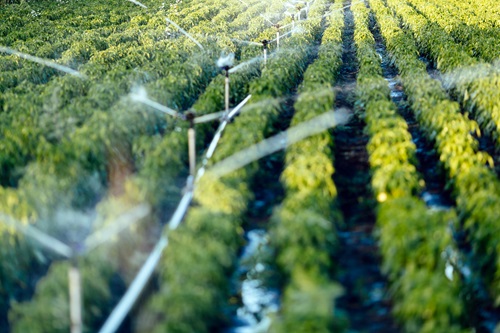
Drip irrigation is the quintessence of modern watering systems in vineyards, where every drop of water is carefully directed to the vine roots. This technique minimizes evaporation and water wastage, while ensuring targeted humidification that prevents leaves and grapes from becoming damp, thus reducing the risk of disease. The system requires a rigorous initial installation and a network of perforated pipes that distribute water directly to the base of each plant. Winegrowers benefit from optimal water management, essential to counter the effects of climate change and prolonged periods of drought.
Spraying close to the ground
This technique improves water efficiency by reducing the distance between the sprinkler nozzles and the ground, thus considerably reducing evaporation. Used mainly in vineyards where the risk of foliar diseases is higher, close-to-ground spraying keeps leaves dry while providing the necessary hydration to the roots. Equipment and installation costs are moderate, but this method requires regular monitoring to ensure that the system remains efficient and free from blockages or damage, particularly after heavy rain or during harvest.
Sub-irrigation
Little-known but highly effective, subirrigation uses the natural level of groundwater to irrigate vines by capillary action. This method is particularly suited to regions with accessible water tables, where water levels can be controlled and adjusted via dams or regulation systems. Sub-irrigation is advantageous for its low maintenance costs and minimal impact on the landscape, making plots less cluttered by external irrigation equipment.
Flood irrigation
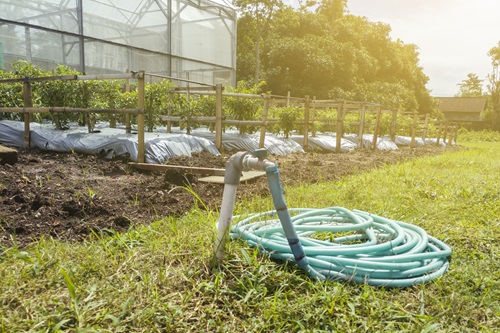
Traditionally used in regions where water is abundant, flood irrigation involves submerging the vineyard with water at strategic periods, allowing deep saturation of the soil. Although less precise than drip irrigation, this method can be beneficial for very permeable soils and in contexts where water management is not limited. However, it requires careful management to avoid excess hydration, which could harm roots and encourage the development of disease.
Automated systems and technology
As technology advances, irrigation systems are becoming increasingly sophisticated, incorporating soil moisture sensors, weather stations and remote management software. These innovations enable winegrowers to react quickly to changes in climate and the water needs of the vines, optimizing water use while preserving grape quality and reducing operating costs.
These irrigation techniques, when well chosen and correctly implemented, enable winegrowers to maintain the health of their vines and the quality of their wine, while meeting the challenges posed by today’s climate and environmental demands.
While watering vines is essential for maintaining healthy, productive vineyards throughout the year, growers also need to be prepared for the challenges posed by extreme weather conditions, such as spring frosts. This critical period can jeopardize young shoots if they are not effectively protected. This is where anti-freeze towers play a crucial role. These air-moving systems are designed to protect crops by redistributing heat accumulated on the ground to cooler areas around the plants, thus preventing frost from forming on sensitive buds.
Irrigation scheduling according to vine cycle: a targeted water strategy
Flowering and fruit set: ensuring optimum fruiting
During flowering and fruit set, key periods in the vine’s development, controlled irrigation is essential. The need for water is particularly high as the vines develop new leaves and flowers, which turn into bunches of grapes. Appropriate watering ensures good pollination and successful fruit set, avoiding the risks of coulure (fall of unfertilized flowers) and millerandage (uneven berry development). Winegrowers must therefore adjust the irrigation system to provide a sufficient quantity of water to support the plant without saturating the soil, which could adversely affect the roots and encourage fungal diseases.
Veraison: modulating water stress to shape the wine’s profile
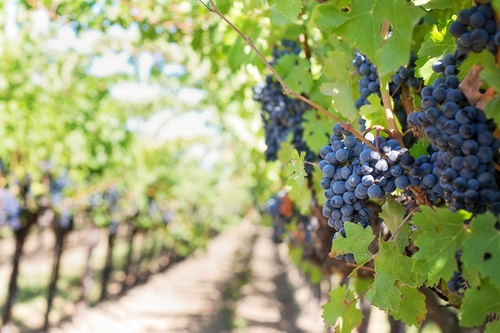
Veraison, marked by berry color change and the beginning of sugar accumulation, is a critical period when water stress management can significantly influence wine quality. Precise irrigation control can accentuate the concentration of aromas and tannins, decisive elements in the wine’s taste profile. Slight water restriction can encourage vines to dig deeper into the soil’s mineral reserves, enriching the aromatic complexity of the grapes. However, a balance must be struck to avoid excessive stress, which could compromise vine health and uniform berry ripeness.
Maturity: calibrating hydration to define wine character
As the grapes reach maturity, the impact of irrigation on acidity and tannin structure becomes even more pronounced. Controlled irrigation can reduce grape acidity, which is often desirable for red wines destined for prolonged aging. Conversely, reduced irrigation can increase tannins and color, favoring the production of more robust, tannic wines. Winemakers need to keep a close eye on the weather and rainfall forecasts to adjust their watering strategy and optimize grape quality just before harvest.
Post-harvest: hydration for regeneration and preparation for winter
After harvest, it’s crucial to continue irrigating the vines to help recover from the stress of fruit growth and prepare the plants for winter. This period of hydration helps support root development and the storage of essential nutrients, ensuring healthy dormancy and renewed vigor for the following spring. Careful post-harvest water management is therefore essential to maintain vine vigor and its ability to resist disease and winter frost.
Each of these stages requires particular attention to irrigation, which needs to be considered not only in terms of quantity, but also timing, to align the vine’s water needs with wine production objectives and current climatic challenges.
Vineyard irrigation regulations and practices in France
In France, irrigation of vineyards is strictly regulated, particularly for AOC wines, to preserve the quality of the wines and the unique characteristics of the terroirs.
Authorized periods
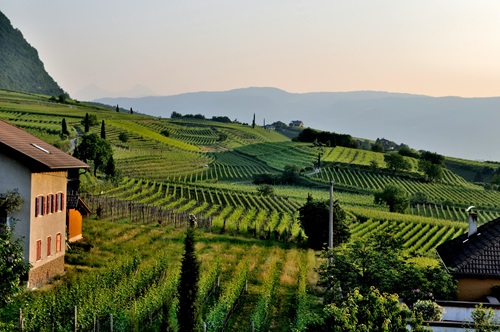
Irrigation is generally permitted from May 1 to August 15. This period is chosen to minimize the impact on grape concentration and quality during the key phase of their development.
Regulations by appellation
Each appellation may have specific rules, adjusted by the INAO according to annual climatic conditions. In the event of exceptional drought, for example, irrigation can be extended to protect the vines and the quality of the wine.
Water volume control
Irrigation volumes are limited to avoid overproduction of grapes and maintain the concentration of flavors and tannins essential to the quality of AOC wines.
Climate adaptation
In the face of climate change, irrigation rules are evolving to incorporate more sustainable and precise practices, using technology to optimize water management according to actual weather conditions.
